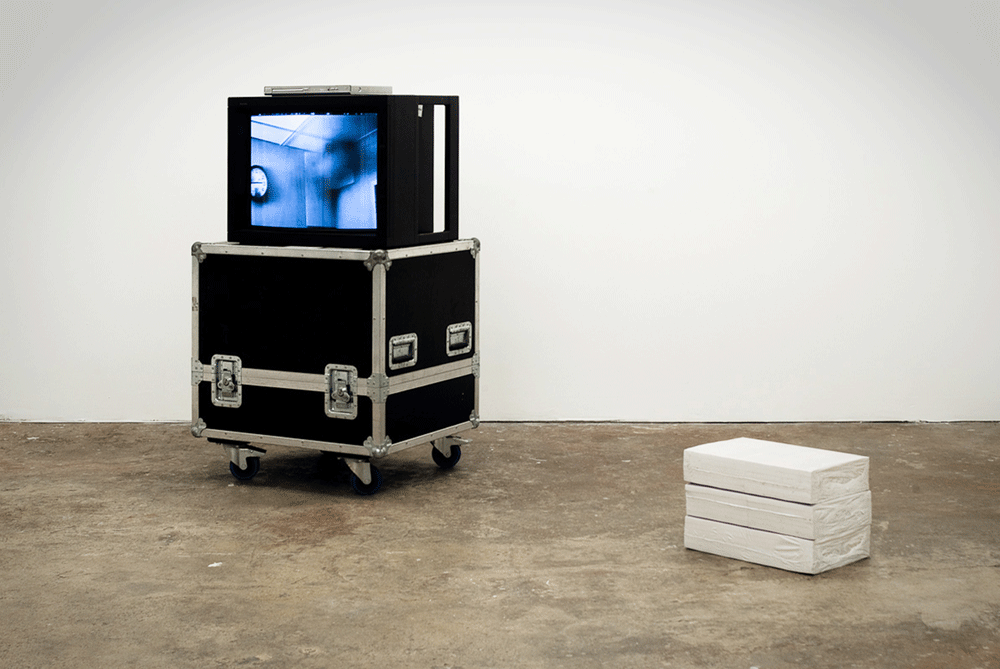Misty Boundaries
FormContent, London, UK
FormContent, London, UK

Divided into three instalments each offering a different configuration of works by six UK-based artists, ‘Misty Boundaries Fades and Dissolves’ played an oft-employed curatorial device with a deft hand, adding complexity to – rather than merely illustrating – an examination of fragmentation and accumulation. Terms such as ‘cut’, ‘copy’, ‘paste’ and ‘remix’ have become thoroughly embedded in the language of art criticism, but references made by the curator to Terry Smith’s characterization of the Contemporary as ‘a thickening of the present’ situated these artists not within the weary legacies of Postmodernism but in a present defined by the infinite layering of digital media.
The exhibition’s time-span (the 1980s to the present) was notionally book-ended by the video collages of George Barber and James Richards, charting a specifically British lineage in moving-image work originating from Barber’s early ‘Scratch’ videos (such as Tilt, 1983). Richards also submits found footage to various editing techniques, though in his hands images possess a more intimate tenor: lending the exhibition its title, Misty Boundaries Fades and Dissolves (2009) – which draws on Clint Eastwood’s 1971 thriller Play Misty For Me – is a short film constructed around a series of enigmatic black and white shots which repeat, fade and dissolve into one another, echoing the repetitive utterances of the female stalker protagonist in Eastwood’s film.
Like Richards and Barber, Clunie Reid scavenges her images from commercial sources – gossip magazines, tabloid newspapers and the Internet – and alters them through physical or digital manipulation. Her blown-up photocopied images, duct-taped to the wall, made their first appearance in the second instalment of the show, displacing the first week’s display of five photographic ‘Self-Montages’ by Linder (which were later installed on top of Reid’s work in part three). Made with the Swiss photographer Birrer in 1981, the powerful images reveal Linder’s treatment of the body – her own in this case, as in much of her early work – as a found object, her use of readily available materials such as cling film or bandages to mask and distort her features deploying a domestic critique of objectification.
An archaeological impulse specific to the FormContent’s East End home provided a welcome subtext to the formal narratives at play within the show. Curator Daniella Saul embarked on the project while the gallery and curatorial collective were located on Hackney’s Beck Road, the residents of which – such as artist Helen Chadwick, Mauren Paley’s original Interim Art and COUM Transmission members Genesis P-Orridge and Cosey Fanni Tutti – are traced in Stewart Home’s online project ‘Art Tripping’. Home’s contribution to the exhibition comprised a sculpture in the form of two factory-wrapped packs of his 2004 novel Down & Out in Shoreditch and Hoxton. For sale at a bulk discount price, the buyer was offered the opportunity to make an immediate profit by destroying the sculpture and selling the individual copies. In a performance at the exhibition’s finnisage, Home shredded a copy of his novel, offering the resulting tangle of paper as a unique work for a significantly marked-up price.
Eva Weinmayr’s film, I Wonder What The Silence Was About (2010), comprises three subtly different versions and examines the productive nature of speculation through the supposedly self-enacted disappearance of the activist art duo ‘Art in Ruins’ (Hannah Vowles and Glyn Banks). Tracing their story through a series of interviews with prominent art professionals who knew and worked with them (including Home), Weinmayr uses various editing techniques to destabilize the facts even further. An interview project with Vowles and Banks carried out in 1994 and intended for publication in frieze but never published, resurfaces here in an accompanying booklet, redressing at least one forgotten fragment from the historical amnesia that haunts their story.























